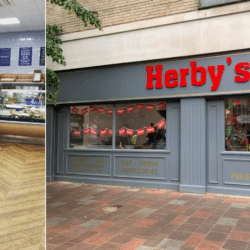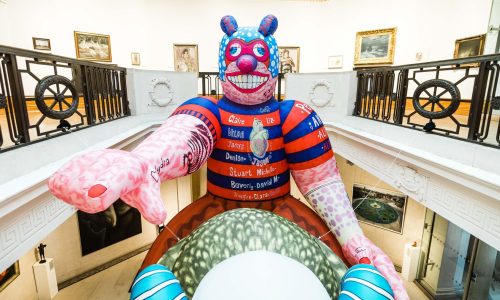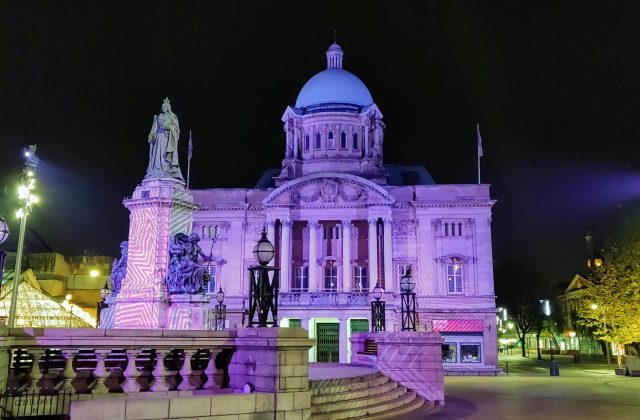Hull was founded as ‘King’s Town’ around the River Humber. Since then, it has witnessed monumental points in history, all of which has led to the development of Hull as we know it today.
Wilberforce House Museum
The Wilberforce House Museum was the home of William Wilberforce, one of the leading figures in the abolishment of the slave trade, and he was also a MP for Hull 1780-1784. This museum not only reflects on Wilberforce’s role in campaigning and legislating the abolishment, but also celebrates West African culture and art as well as creating a memorial for the brutality the slave trade caused. It is one of the oldest slavery museums (and is Hull’s oldest museum overall) and it uses the historical legacy of Wilberforce to call our attention to slavery in the modern day, and how we can help towards abolishing that too.
You are able to take a virtual tour of the house, as it is temporarily closed at the moment.
Spurn Lighthouse

Spurn Point is a place full of natural and human history, including its villages that have been lost to sea! One of its most important historical sites, however, has to be the lighthouse. Since the 15th century, there has always been a lighthouse at Spurn but its current one was actually built in 1895 and you can go and visit.
The lighthouse has been a significant part of Spurn’s history as this area has witnessed a huge amount of structural changes because of war, from the Napoleonic garrisons to the First World War barracks. You can book a three-hour military history tour of Spurn here.
Maister House and Blaydes House
Maister House on 156 High Street is one of Hull’s most significant historic homes. The Maister family were hugely influential merchants in Hull that have lived in the city since the 16th century. Their house (now owned by the National Trust) has had considerable changes as it was damaged by the fire on 13 April 1743, which unfortunately killed Henry Maister’s wife, son and two maids. When the house was rebuilt in 1744, the wooden central staircase was replaced with an ornate stone one, to prevent a fire from spreading again.
Another significant merchant family in Hull were the Blaydes, who built their home in 1740 opposite one of Hull’s oldest shipyards, where they built ships. One of these famous ships was the Bounty, which was built for Benjamin Blaydes in 1784 when he joined the Royal Navy. He was also a chamberlain for Hull. Another significant family member was James Blayde who married Ann Marvell, the sister of one of Hull’s most famous poets, Andrew Marvell.
Beverley Minster
For the last 1300 years, the Beverley Minster has been the heart of the Christian community in Beverley and one of its most historical sites. Founded by Bishop John of York (who would become St John of Beverley) in the early 8th century, the area where the Minster now stands has been a place of many pilgrimages and been visited by royalty, such as Henry V paying respects to St John’s shrine after his win at the Battle of Agincourt.
The Minster has been destroyed, abandoned and rebuilt many times and this means that the building itself is a blend of architecture, with many parts originating from 1190-1260, whereas other aspects of it are in the Gothic style of the 19th century. There is a lot more information available on the Beverley Minster website, which can tell you everything about the Minster today as well as its history.
The Docks
The first ever dock in Hull came from the Haven (the Old Harbour) and, even though it opened on 22 September 1778, it didn’t have an official name until 1809- everyone just called it ‘The Dock’. Then, after the Humber Dock was built in 1809, it was renamed The Old Dock. After a royal visit from Queen Victoria and Prince Albert in 1855, it was given its last name change to Queen’s Dock. After being closed in 1930, the dock was filled in and landscaped. Now it is known as Queen’s Gardens.
Hull has had lots of docks built since then, particularly in the 19th and 20th centuries, although many have been shut down. St Andrews has particular significance in Hull. Named after the patron saint of fishermen, it was once home to a massive fishing fleet and it is currently being debated as to whether it will be restored by the city council.
If you’re interested in learning more about Hull’s rich maritime history, the best place to go is Hull Maritime Museum, which has its own interesting history as it was originally built in 1871 as a Hull’s Dock Offices.
And More…
For those that are keen to learn more about the fascinating history of our city, Hull History Centre has some really interesting online exhibitions and infomation that you will enjoy. You can also find out more about Hull’s oldest pubs that are full of history, as well as drinks!










































